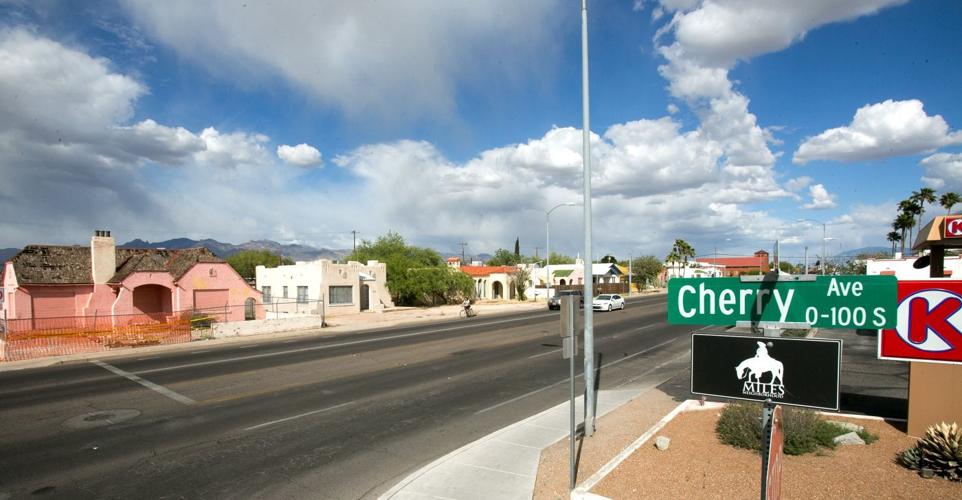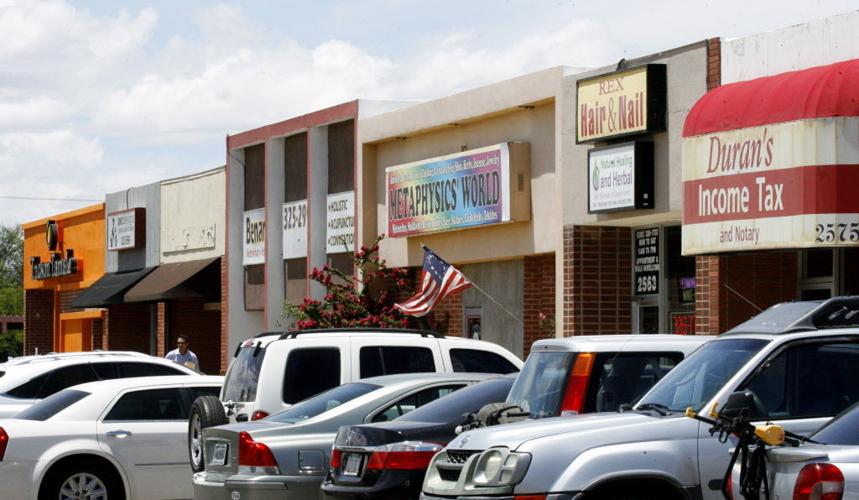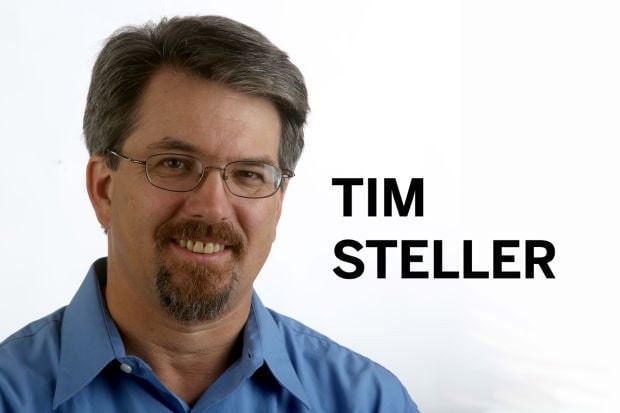The city finally released its proposed realignment for the widening of Broadway last week.
Can you guess what the response from neighborhood groups was?
Of course you can.
ŌĆ£Say YES to smart development and NO to another bad alignment plan for Broadway. Why would we spend $75 million for no appreciable improvement in traffic?ŌĆØ
ThatŌĆÖs the first couple of sentences of an launched to oppose the cityŌĆÖs new realignment of the two miles of Broadway between Country Club and Euclid. This new, six-lane design, as you may recall, was the result of a previous compromise between neighborhood opponents of the original plan and the powers that be ŌĆö the Regional Transportation Authority and the city of Tucson.
People are also reading…
Got that? The original plan was too big (to be fair, the neighborhood activists were right about that), but now, so is the compromise that they forced.
The City Council is holding a hearing Tuesday evening on the plan. Expecting a big turnout, theyŌĆÖve moved the 5:30 p.m. meeting to the Pima County Board of Supervisors chambers.
I imagine most of what the mayor and council will hear Tuesday night is what I heard Friday when talking to opponents of the plan. I just hope they donŌĆÖt have undue sway over what I think will be a good project for the whole city.
ŌĆ£I donŌĆÖt feel like the city should be allowing an RTA project that widens the road in the urban core unless thereŌĆÖs going to be demonstrable benefit to the city,ŌĆØ Suzanne Schafer told me.
The new alignment, she said, ŌĆ£will take land that is not devoted to roads and devote it to roads. In this day and age, I donŌĆÖt think thereŌĆÖs any room for that or justification for that.ŌĆØ
What she and other opponents of the Broadway widening would like is for the project to improve the sidewalks, bicycle lanes and transit functionality. No widening for cars, which she and others consider part of an old paradigm.
ŌĆ£LetŌĆÖs build the amenities that the people have been asking for,ŌĆØ Councilman Steve Kozachik said. ŌĆ£WeŌĆÖre going to build something that nobody wants, nobody needs and nobody can afford.ŌĆØ
Another anti-widening activist, Les Pierce, sent out a critique alleging ŌĆ£Analysis of RTA and COTŌĆÖs (City of TucsonŌĆÖs) own numbers shows widening Broadway will not cut travel times for cars or anyone else.ŌĆØ
She based that on her analysis of figures in the cityŌĆÖs new plan, which show a maximum 1.4 percent improvement in traffic flow.
What Pierce didnŌĆÖt point out, Beth Abramowitz told me, is the crucial context of that figure. Abramowitz, the cityŌĆÖs engineering project manager for the Broadway widening, said the 1.4 percent improvement is whatŌĆÖs projected to happen 20 years after the project is complete. Before then, the improvement will be greater, she said.
More importantly, perhaps, that 1.4 percent improvement in 20 years is projected to occur despite a 22 percent increase in traffic. In other words, if this six-lane realignment is built, it is projected to improve traffic flow significantly right away, an improvement that gradually diminishes over 20 years but still is better than now, two decades later.
ŌĆ£From day one, you can expect youŌĆÖll see a significant decrease in travel time,ŌĆØ Abramowitz said.
Of course, that comes at a cost. Some old buildings will be destroyed. IŌĆÖm avoiding using the term ŌĆ£historicŌĆØ here because not all of them are special in any way that merits such a dignified descriptor.
The notable old buildings in that stretch ŌĆö such as Broadway Village and Chase Bank at the Country Club intersection ŌĆö will be spared.
The minimum number of demolitions, under the current plan, is 27, Abramowitz said. That compares to 130 demolitions that would have been required under the initial, eight-lane plan that was discarded in favor of this compromise.
The genius of the current plan is that it has Broadway bending slightly north and south in order to minimize the number of purchases the city must make, as well as demolitions. To avoid taking buildings from both the north and south sides of the street, it will bend to take property from just one side in several places.
While some activists see the project as an outdated solution to a minimal problem, I see it as a good resolution to a compromise they demanded. In fact, the compromise already has meant removing grade-separated bicycle lanes, which would have been a huge improvement, in favor of more traditional, slightly wider bike lanes along the side of the road.
ŌĆ£People who own property along Broadway very much want the project to be completed yesterday,ŌĆØ commercial real estate broker Craig Finfrock, a partner in Broadway Village, told me. ŌĆ£They also want it done sensibly.ŌĆØ
By that, he means wide enough to accommodate the development that the road project itself will naturally unleash in an area that is ready for it.
As it stands, those two miles are a deteriorated patchwork of houses, shopping centers, parking lots and vacant lots, with some buildings occupied and others vacant. ItŌĆÖs the kind of Tucson stretch where sidewalks randomly stop and start and parking lots blend into the street.
The proposed realignment would fix that while easing the flow of traffic. It would create two traffic lanes, plus a third lane for buses and cars on each edge of the street. Bike lanes and six-foot-wide sidewalks would also line the streets. For future consideration, if the city and RTA choose to pursue extending the streetcar line, it could go in the transit lanes, Abramowitz said.
It would also eliminate many of the narrow, dangerous parking lots that front some of the commercial buildings. In my view, thatŌĆÖs an improvement. Pushing parking lots to the side and back of some businesses will make the so-called Sunshine Mile a more attractive place.
Property owners have waited almost a generation since the city first promised to widen Broadway in 1989. TheyŌĆÖve either been hesitant to improve their own properties, knowing the city might be buying them out, or unable to sell ŌĆö for the same reason.
Any solution will likely lead to improvements in the area because, finally, investors can know what the future holds.
What kind of investments? My best guess is they will be population-increasing, traffic-inducing residential and commercial projects. Just look near the university, downtown, even on 22nd Street: apartments, townhouses, retail shops, office buildings ŌĆö what people call ŌĆ£mixed-useŌĆØ projects.
Certainty on Broadway will lead to this sort of development. And that development will need the infrastructure to support it, which the new alignment provides.





















